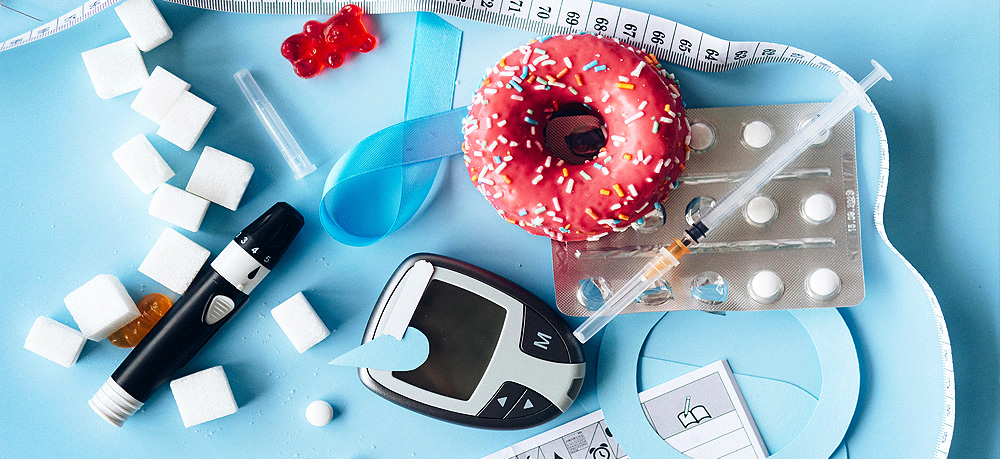Type 2 Diabetes Management: Strategies for Maintaining Healthy Blood Sugar Levels and Good Mental Health
Diabetes is a prevalent health concern affecting millions of individuals across the United States and 4.3 million people in the UK. Statistics indicate that about 38 million Americans, which is roughly 1 in 10 individuals, are living with diabetes.
Among these cases, approximately 90-95% are classified as type 2 diabetes, making it the most common form of the disease.
Beyond its physical implications, diabetes can also significantly impact an individual’s mental health, leading to challenges such as depression, anxiety, anger issues, and other forms of diabetes-related distress.
These emotional responses can arise from the daily stresses of disease management, fears about future complications, and the lifestyle adjustments required to maintain healthy blood sugar levels.
Managing type 2 diabetes is essential for preventing complications and maintaining overall health. One of the key components of diabetes management is keeping blood sugar levels within a healthy range.
Below are some practical strategies you need to know for managing type 2 diabetes and maintaining healthy blood sugar levels.
Diabetes Medications:
Diabetes medications play a vital role in managing type 2 diabetes by helping to control blood sugar levels and reduce the risk of complications associated with the disease. Various medications are available, each with its mechanisms of action and potential benefits.
- Metformin: Metformin is often considered the first-line medication for treating type 2 diabetes. It reduces the amount of glucose the liver produces and improves insulin sensitivity in the body’s tissues. Metformin is usually taken orally and is known for its effectiveness in lowering blood sugar levels without causing significant fluctuations or weight gain.
- Thiazolidinediones (TZDs): Thiazolidinediones, including pioglitazone and rosiglitazone, work by decreasing glucose production in the liver and enhancing insulin sensitivity in the body’s cells. They are often prescribed in combination with other diabetes medications to help improve blood sugar control. However, TZDs may be associated with side effects such as fluid retention and weight gain.
- GLP-1 Receptor Agonists: These injectable medications mimic the action of a hormone called glucagon-like peptide-1 (GLP-1). They work by stimulating insulin secretion, suppressing glucagon secretion (which reduces blood sugar production by the liver), and slowing down gastric emptying (which helps control post-meal blood sugar spikes). Examples of GLP-1 receptor agonists include liraglutide, exenatide, and dulaglutide.
It’s essential to take diabetes medications as prescribed by your healthcare provider and to follow their instructions regarding dosage and administration.
Exercise:
Regular physical activity is beneficial for everyone, but it’s crucial for individuals with type 2 diabetes. Exercise helps lower blood sugar levels by increasing insulin sensitivity and improving muscle glucose uptake.
Aim for at least 150 minutes of moderate-intensity aerobic exercise, such as brisk walking or cycling, each week, along with strength training exercises two or more days a week. Be sure to check your blood sugar levels before and after exercise, and talk to your doctor about any precautions you should take.
Healthy Eating:
- Fruits and Vegetables: Aim to fill half your plate with colorful fruits and vegetables at each meal. These foods are rich in vitamins, minerals, and antioxidants, and they’re also low in calories and fiber, which helps regulate blood sugar levels.
- Whole Grains: Choose whole grains such as brown rice, quinoa, oats, and whole wheat bread instead of refined grains like white rice and white bread. Whole grains are higher in fiber and nutrients, which can help stabilize blood sugar levels and promote satiety.
- Lean Proteins: Include lean protein sources in your diet, such as skinless poultry, fish, tofu, legumes, and nuts. Protein helps maintain muscle mass and promotes feelings of fullness, which can prevent overeating and support weight management.
- Healthy Fats: Incorporate sources of healthy fats such as avocados, nuts, seeds, and olive oil into your meals. Healthy fats are essential for overall health and can help improve insulin sensitivity and reduce inflammation.
It’s no secret that a healthy diet leads to a healthier body. Meeting with a registered dietitian can significantly benefit individuals with type 2 diabetes. A dietitian can help you create a personalized meal plan based on your dietary preferences, lifestyle, and health goals. They can also guide managing carbohydrate intake, which is particularly important for controlling blood sugar levels in diabetes.
Diabetes Insulin Therapy:
Some people with type 2 diabetes may require insulin therapy to help manage their blood sugar levels. Insulin is usually administered through injections or an insulin pump and may be combined with other diabetes medications.
It’s essential to work closely with your healthcare provider to determine the right type and dosage of insulin for your needs. Monitor your blood sugar levels regularly and adjust your insulin doses as needed.
Stress Management:
Stress can significantly impact blood sugar levels, so finding healthy ways to manage stress is essential. Practice relaxation techniques such as deep breathing, meditation, or yoga to help reduce stress levels.
Engage in activities you enjoy and help you relax, such as spending time outdoors, listening to music, or spending time with loved ones. If you’re feeling overwhelmed, don’t hesitate to seek support from a healthcare professional or a support group.
Final Takeaway:
Remember to work closely with your healthcare team to develop a personalized treatment plan that meets your needs. With dedication and commitment, you can take control of your diabetes and live a healthy, fulfilling life.
———————————-


